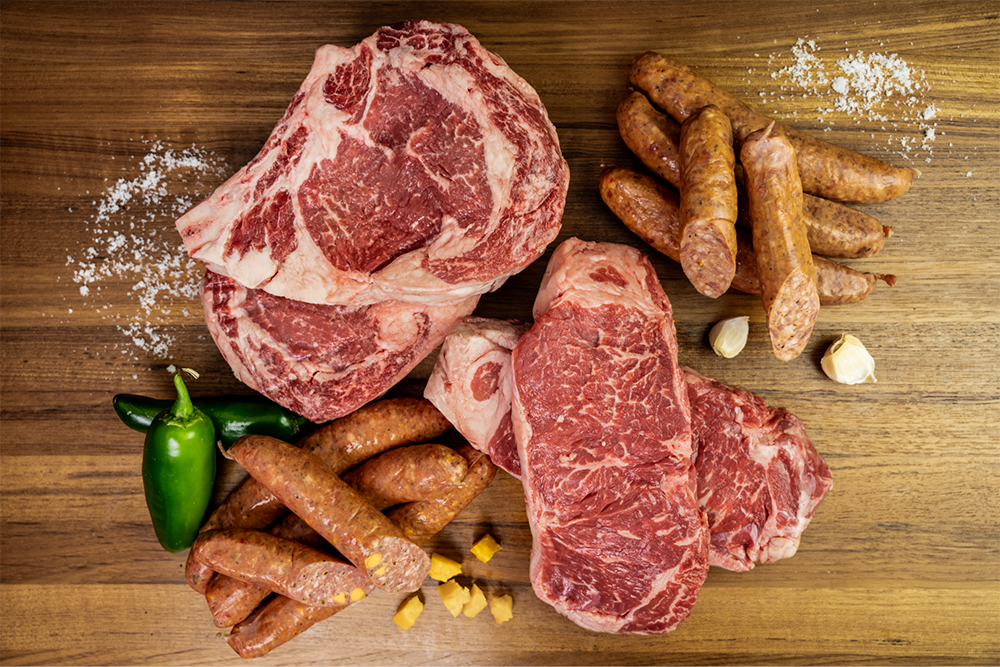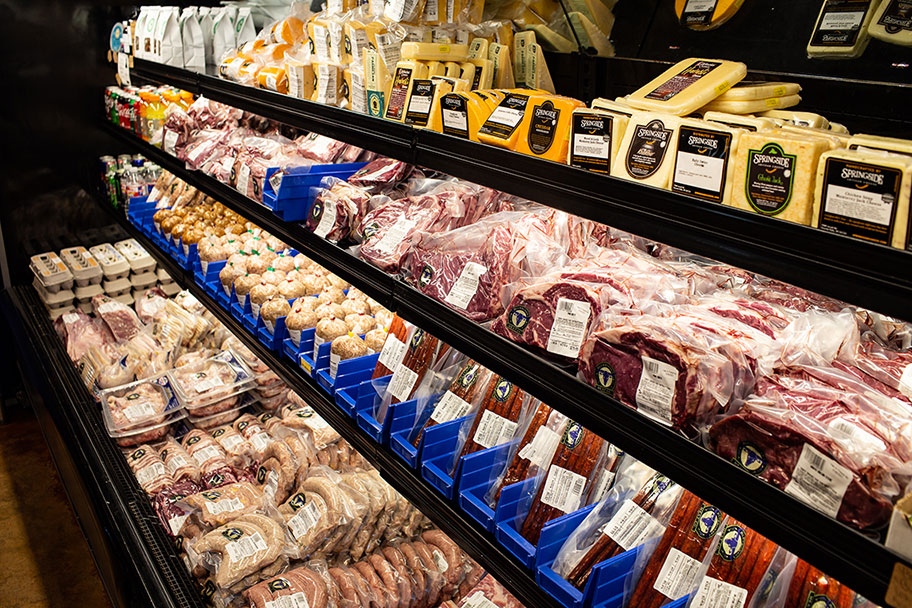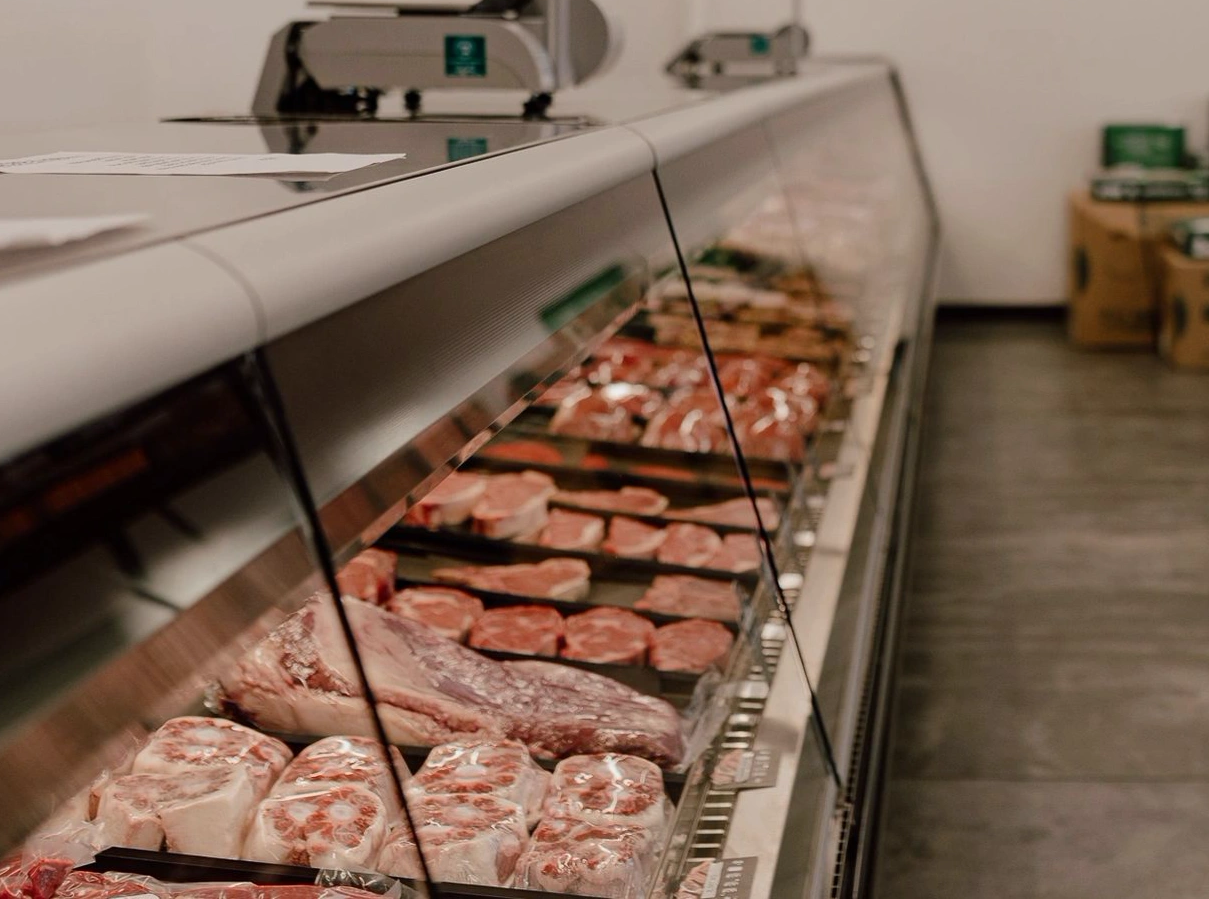Discover Fresh Cuts at Bagley Farms Meat Market Edwardsville IL for Your Next barbeque
Discover Fresh Cuts at Bagley Farms Meat Market Edwardsville IL for Your Next barbeque
Blog Article
Reveal the Art of the Butcher's Cut in a Modern Meat Market
In the ever-evolving landscape of modern meat markets, the butcher's cut has actually transcended its conventional origins, combining olden workmanship with modern techniques. bagley farms meat market edwardsville il. Today's butchers are not just processors of meat; they are knowledgeable artisans who highlight sustainability and moral sourcing. Their knowledge in selecting and preparing cuts customized to particular culinary needs supplies an unrivaled eating experience. Yet, what genuinely establishes the contemporary butcher apart is their ability to forge a deeper link in between consumers and the beginnings of their meat. Exactly how do these masters equilibrium tradition with technology, and what ramifications does this have for the future of meat consumption?
Evolution of Butchery Strategies

The mid-20th century saw butchery strategies additionally refined by clinical insights right into muscular tissue biology and meat aging, improving both tenderness and preference. Developments like vacuum cleaner product packaging and refrigeration prolonged item shelf-life, permitting butchers to expand offerings and enhance top quality control. This duration additionally marked the increase of specialized tools, such as band saws and meat slicers, which raised precision and effectiveness in meat processing.
Computerized systems currently help in monitoring pet provenance and maximizing cuts to fulfill particular client choices. In addition, a resurgence in artisanal butchery has arised, mixing traditional abilities with modern-day knowledge to provide to customers seeking honest and sustainable meat options.

Recognizing Meat Cuts

Comprehending the details of meat cuts is vital for both butchers and consumers seeking quality and worth. Each cut originates from a different component of the animal, giving distinct flavors, structures, and food preparation approaches. Proficiency of these distinctions not only improves cooking experiences yet additionally maximizes the utility of each carcass. For butchers, precise cuts mirror skill and regard for the craft, guaranteeing minimal waste and ideal yield.
The main groups of meat cuts consist of primal, sub-primal, and retail cuts. Butchers after that damage these down better right into sub-primal cuts, prior to ultimately creating retail cuts readily available to consumers, like ribeye or tenderloin.
Comprehending muscle mass make-up is vital; muscles used extra often by the pet often tend to be harder and are best fit for slow-moving food preparation approaches, while less-used muscle mass, like those discovered in the loin, are much more tender and perfect for grilling or roasting. Familiarity with these distinctions equips customers to make enlightened choices, boosting their culinary endeavors.
Picking Quality Meat
Picking the ideal meat entails more than simply choosing a visually attractive piece from the display. The art of selecting top quality meat needs a discerning eye and expertise of particular qualities that indicate freshness and quality.
Secondly, consider the marbling, which refers to the white flecks of fat within the muscle. Appropriate marbling is a vital indicator of inflammation and taste, as it melts during food preparation, boosting the meat's juiciness. Keep in mind, greater marbling often associates Get More Info with exceptional top quality cuts, such as USDA Prime.
Appearance is another vital aspect; meat ought to feel solid to the touch, not slimy or extremely soft. Furthermore, be mindful of the fragrance. Fresh meat needs to have a tidy, neutral smell, without any kind of sour or repulsive odors.
Coupling Cuts With Food Preparation Techniques
Effectively coupling cuts of meat with the suitable cooking techniques is vital for achieving ideal flavor and texture. Various cuts vary in inflammation, marbling, and connective tissue material, each calling for certain strategies to unlock their possibility. Tender cuts like filet mignon and ribeye, with their intrinsic marbling, advantage from high-heat, quick-cooking methods such as barbecuing or pan-searing. These techniques boost the meat's all-natural flavors and make sure a juicy surface.
Alternatively, harder cuts like brisket and chuck roast are rich in collagen, which breaks down right into gelatin when cooked slowly. These cuts are optimal for braising or slow-moving roasting, enabling the meat to tenderize gradually and develop deep, intricate flavors. Cuts such as short ribs and pork shoulder get on well with slow-cooking methods, where expanded cooking times transform their durable structures right into succulent recipes.
Lamb shanks and oxtail, which call for prolonged food preparation to soften, are excellent prospects for stewing or slow simmering. These approaches coax out rich, passionate tastes while maintaining dampness. By understanding the special qualities of each cut, chefs and home cooks alike Get the facts can raise their cooking creations, ensuring each recipe is both satisfying and memorable.
The Butcher's Function Today
Navigating the developing landscape of the contemporary meat market, the butcher's role today extends past plain preparation of cuts. Contemporary butchers are cooking artisans, instructors, and advocates for sustainable techniques. They bridge the gap between the ranch and the fork by making certain ethical sourcing, understanding animal husbandry, and prioritizing transparency in the supply chain. This change reflects the growing customer need for quality over quantity, where provenance and pet welfare are vital.
In addition to crafting exact cuts, butchers now involve straight with consumers, providing cooking advice and customizing choices to match individual requirements and choices. Their proficiency in meat aging, marbling, and taste profiles empowers consumers to make informed choices, improving their cooking experiences. helpful resources This personalized solution exemplifies the butcher's evolving duty as a relied on consultant in the kitchen area.
Additionally, butchers are essential in decreasing waste, using entire animals to produce varied items such as sausages and supplies - bagley farms meat market edwardsville il. This comprehensive technique not just respects the animal but also lines up with modern sustainability goals. In this method, the contemporary butcher personifies both custom and technology, adjusting to an ever-changing market while preserving the creativity and stability of their craft

Verdict
Proficiency in understanding varied meat cuts and quality indications encourages butchers to supply informed suggestions, straightening certain cuts with optimal food preparation techniques. By recognizing historical techniques while embracing contemporary needs, the butcher's role remains crucial in today's advanced meat market.
Report this page